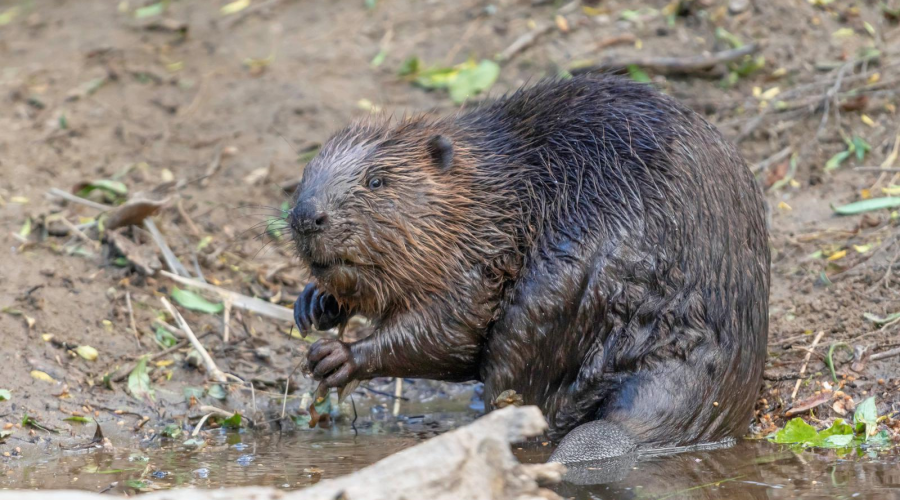
Understanding the Ecosystem Engineer
What is a beaver?
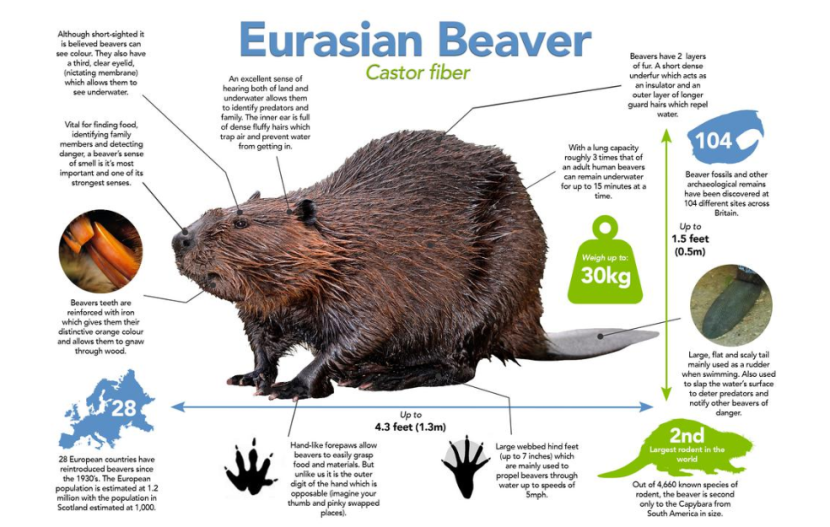
Eurasian beaver (Castor fiber)
Beavers weigh up to 30kg. Grow up to 4.3 feet (1.3m) in length and up to 1.5 feet (0.5m) in height.
Although short-sighted it is believed beaver can see colour. They also have a third, clear eyelid, (nictating membrane) which allows them to see underwater.
An excellent sense of hearing both of land and underwater allows them to identify predators and family. The inner ear is full of dense fluffy hairs which trap air and prevent water from getting in.
Vital for finding food, identifying family members and detecting danger, a beaver's sense of smell is its most important and one of its strongest senses.
Beavers teeth are reinforced with iron which given them their distinctive orange colour and allows them to gnaw through wood.
Beavers have 2 layers of fur. A short dense underfur which acts as an insulator ad an outer layer of longer guard hairs which repel water.
With a lung capacity roughly 3 times that of an adult human beavers can remain underwater for up to 15 minutes at a time.
Large, flat and scaly tail mainly used as a rudder when swimming. Also used to slap the water's surface to deter predators and notify other beavers of danger.
Hand-like forepaws allow beavers to easily grasp food and materials. But unlike us it is the outer digit of the hand which is opposable (image your thumb and pinky swapped places).
Large webbed hind feet (up to 7 inches) which are mainly used to propel beavers through water up to speeds of 5mph.
28 European countries have reintroduced beavers since the 1930s. The European population is estimated at 1.2million with the population in Scotland estimate at 1000.
2nd largest rodent in the world. Out of 4,660 known species of rodent, the beaver is second only to the Capybara from South America in size.
Beaver fossils and other archaeological remains have been discovered at 104 different sites across Britain.
The Eurasian beaver is a large, semiaquatic, herbivorous rodent which is native to Scotland. It is found in freshwater environments such as rivers, streams and lochs, and lives in family groups typically of 2 to 5 animals which will contain a mated pair and any offspring from that year and the year before.
They were hunted to extinction in Scotland roughly 400 years ago for their fur, meat and scent glands but have been reintroduced as part of the Scottish Beaver Trial and through unlicenced releases in Tayside. The population in Scotland is now estimated to be >1,000 animals.
Beavers are known as a keystone species due to their ability to shape freshwater habitats which benefits many other animal and plant species, but their engineering can conflict with human infrastructure and farming systems.
Below we look at common beaver activities and how they can benefit biodiversity but also present people with challenges.
Foraging and Tree Felling
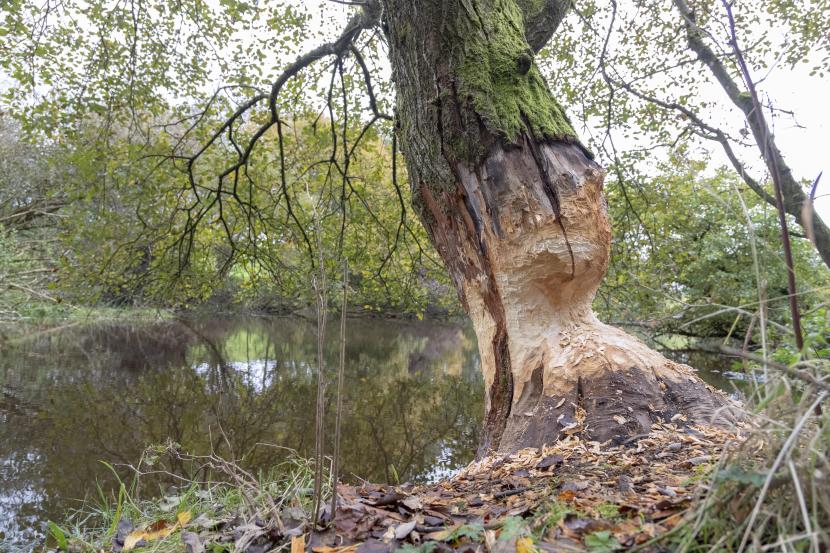
Beavers are herbivores and browse on a wide range of bark, shoots, leaves and roots, from riparian to aquatic vegetation. They fell trees for food but also building materials for constructing their dams and lodges. They have a preference for tree species with soft wood such as willow, birch, alder, aspen, ash, poplar and hazel, but what they will eat is relative to what is available. The felling of native trees results in coppicing and root growth, which can extend the life of some species and result in the strengthening of river banks.
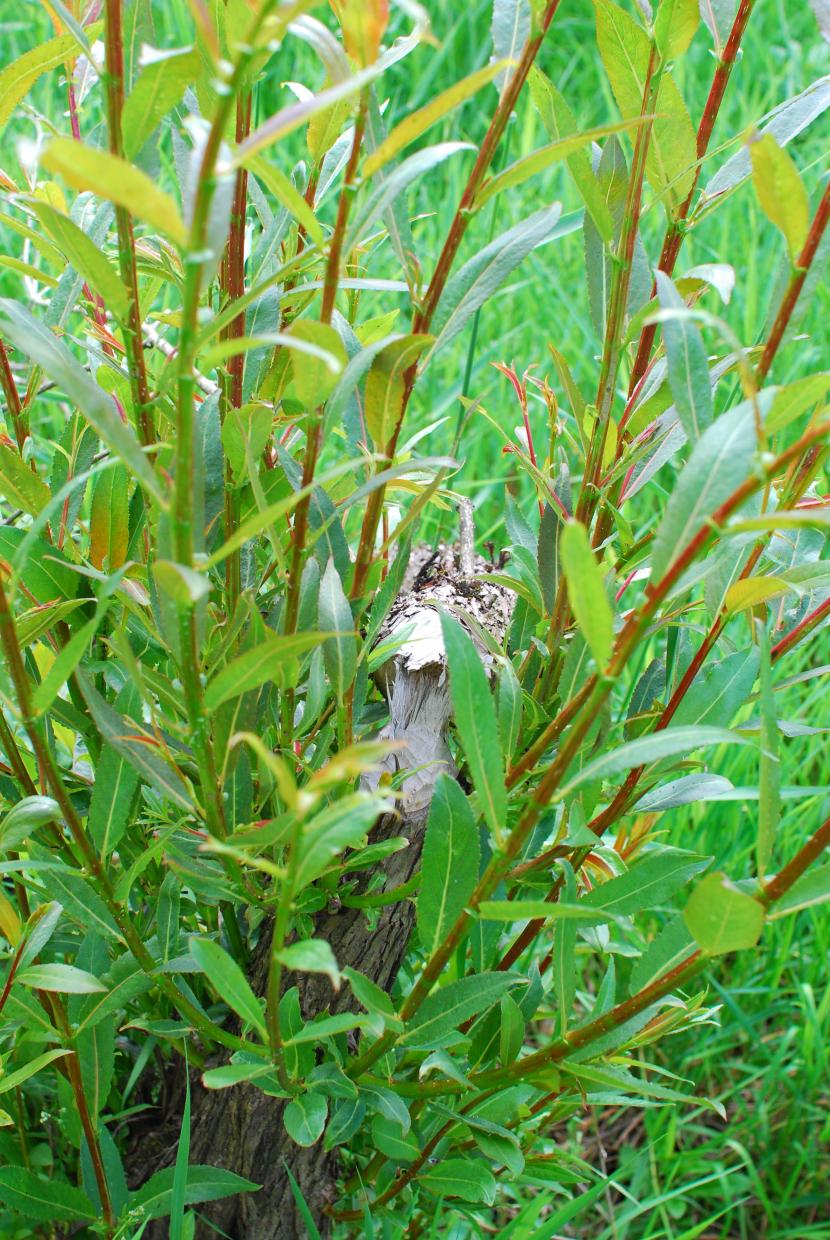
Beavers mostly feed along or close to the water’s edge to avoid predation. As a result most foraging activity occurs within around 20m or so of the water’s edge with beavers rarely moving more than 60m from water to forage.
Foraging by beavers brings a range of biodiversity benefits. Selective feeding and tree felling opens up woodland canopy, allowing more light to reach the ground, enabling the regeneration of understorey vegetation, increasing the diversity of plant, lichen and bryophyte species, and improves feeding opportunities for insectivorous birds and bats.
Opening up of the canopy also results in increased light hitting water-bodies which has been shown to increase breeding in amphibians and can raise the water temperature leading to an increase in the number of aquatic invertebrates. But increased temperatures may favour non-salmonid species, which have a greater tolerance for lower oxygen levels in the water.
The increase in standing and felled deadwood on land and in water from beaver foraging has also been shown to provide valuable habitat for fungi, invertebrates and beetles which act as a food source for many species of amphibians, birds and fish. Deadwood, both on land and in water, provides shelter for many species from their predators, along with breeding sites. Deadwood in water increases scour which can help with the naturalisation of rivers, but may present conflicts in some locations.
Tree felling can be undesirable and hazardous in some locations. Sensitive trees in the immediate riparian zone may require mitigation to prevent them from being felled. They can be protected individually using wrapping and painting methods or as a stand using fencing. Find out how you can protect trees by wrapping them in wire mesh.
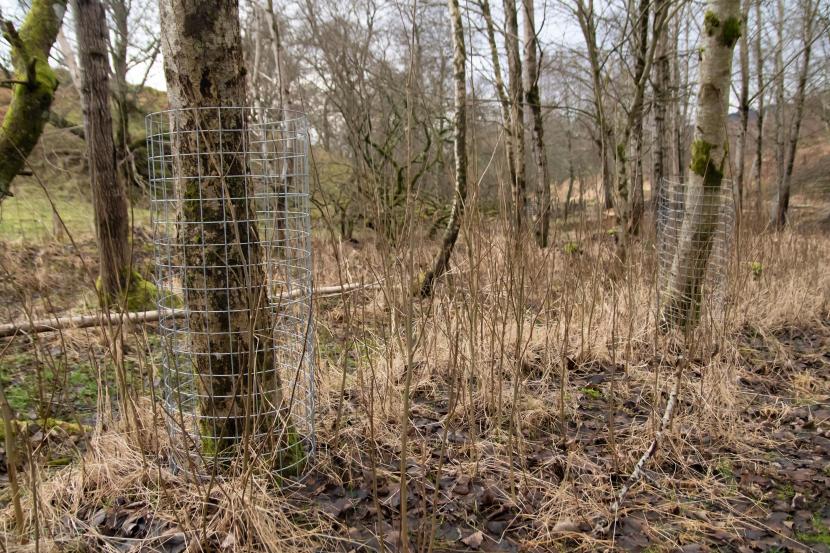
Making space for nature and creating a buffer from intensive land use along the river is an alternative form of mitigation which will allow natural regeneration of native riparian vegetation and will reduce the need for beavers to forage on mature trees.
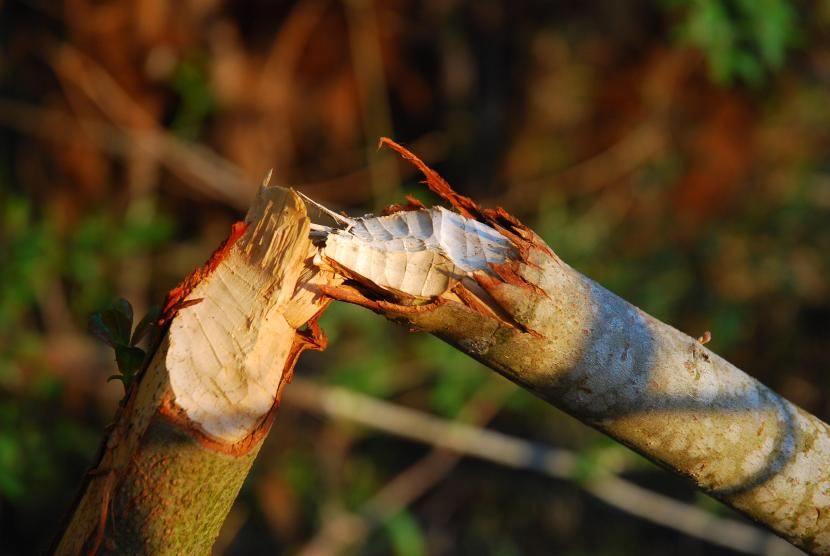
Beaver Damming
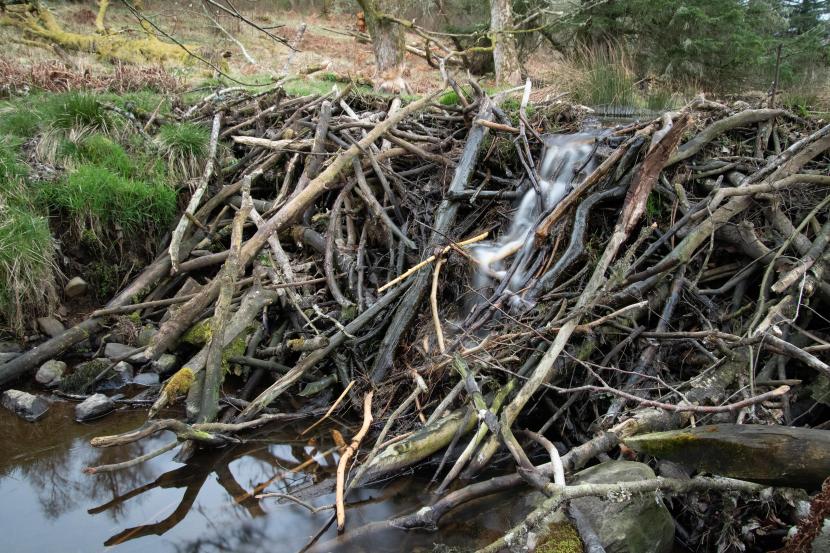
Beavers build dams to increase and maintain the water depth in their territory to protect them from predation as they navigate it, open up new areas for browsing, and to keep the entrances to their multiple burrows and lodges submerged.
In freshwater habitats, with wide water courses and/or where water depth is naturally sufficient, such as the main channel of a river or a loch, beavers will not be physically able to build a dam.
Water levels at a site is the main decisive factor in triggering dam building activity, not the sound of running water as is often reported.
Dam building tends to occur in late summer and autumn, but beavers repair and build dams throughout the year whenever necessary.
Beavers will utilise natural and artificial features in their territory when dam-building, such as narrowing of a channel, large rocks, culverts, or fallen trees already in place. Dam placement and building technique will vary according to the hydrology of the site.
Dam construction will typically begin with a beaver depositing a base layer of mud, stones and vegetation. Larger sticks are then placed on the structure pointing upstream and weighed down with more mud and stones. Finally vegetation and mud will be used to plug any remaining gaps. Beavers have been found to skillfully integrate all sorts of available materials into their leaky structures without tree felling.
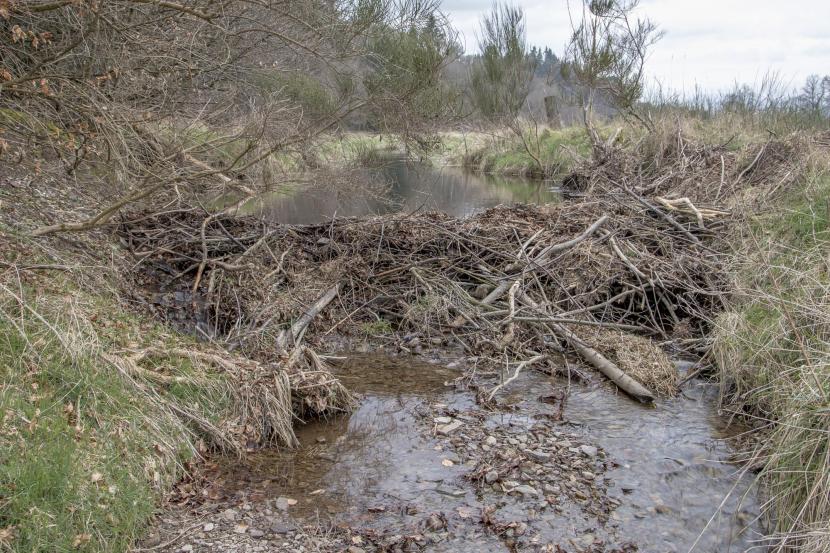
Beaver dams provide a host of benefits for beavers and people. The creation of new complex wetland behind a dam provides new habitat for a diverse range of plant and invertebrate species. This in turn provides breeding, foraging and shelter opportunities for a range of birds, bats, mammals and amphibians.
By impounding water and slowly releasing it through leaky structures beaver damming activity makes river systems more resilient to drought by increasing base flows in dry periods and decreasing the risk of flooding downstream during high flows.
Research has even shown that by impounding water beaver created wetlands keep plants green and soil wet during droughts and even help reduce wildfires providing a refuge for wildlife which may even help limit fire spread.
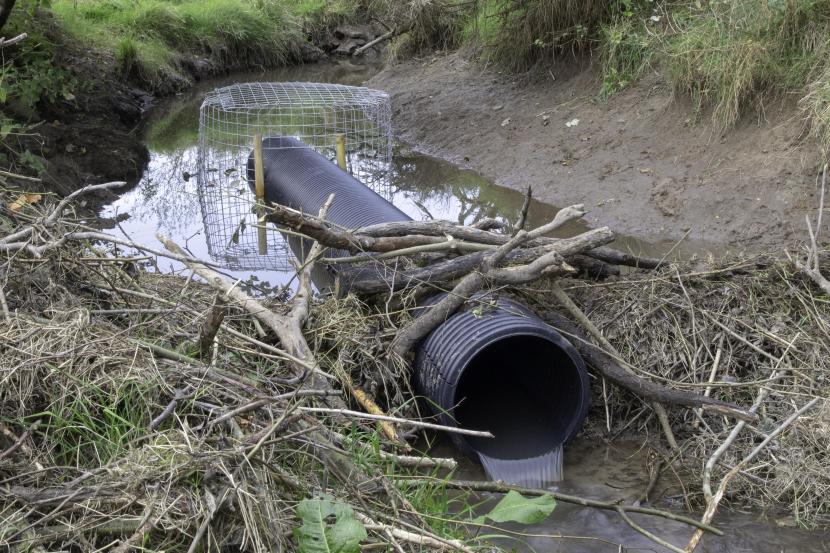
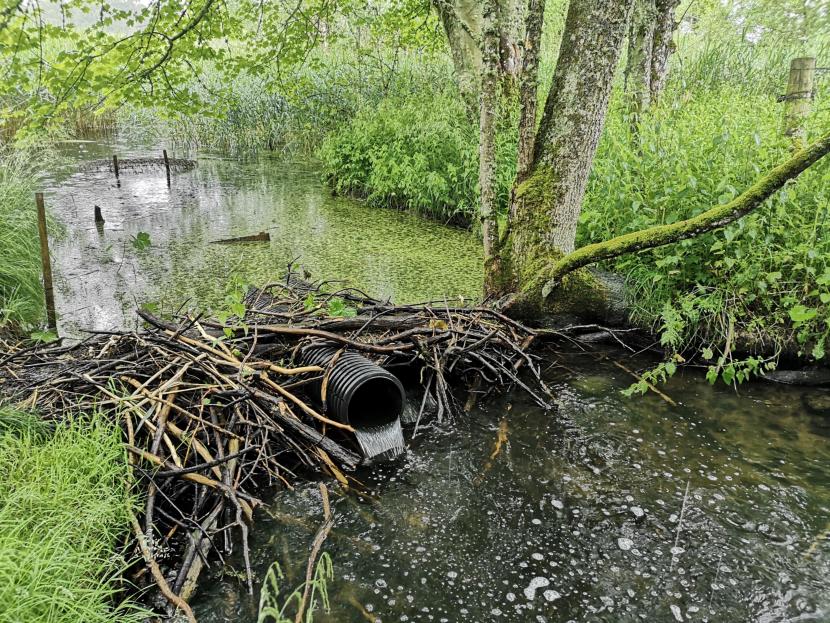
Beaver damming can cause localised flooding problems for people. Any land-manager tackling a beaver damming conflict should seek professional advice from NatureScot, as work needs to be carried without causing pollution and consideration needs to be given to animal welfare and potentially fish passage depending on the site.
Our beaver mitigation team can be contacted by emailing [email protected].
Burrowing and Lodge Building
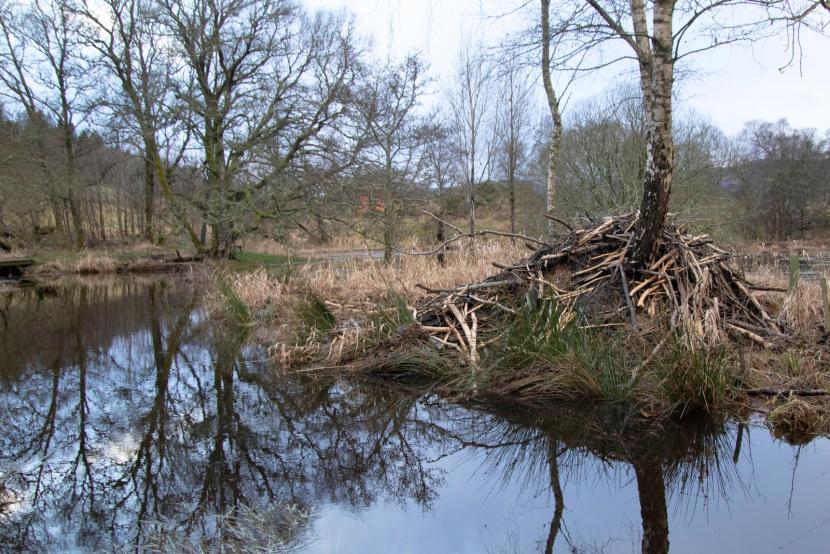
Lodges and burrows act as the focal point of a beaver's territory. They both provide a safe space where beavers can rest and breed protected from water and predators. Lodges and burrows are a protected feature under current legislation and cannot be disturbed or damaged without the appropriate licence.
Both lodges and burrows normally contain an entrance tunnel starting underwater, a feeding chamber at water level and a sleeping chamber above water level.
Whether a beaver digs a burrow or builds a lodge is based on water depth and bank characteristics of their territory. In wetlands or water bodies with very low profile banks, beavers tend to build upwards, creating very visible lodges. In water bodies with deep water and steeper banks, beavers may live entirely in a range of burrows.
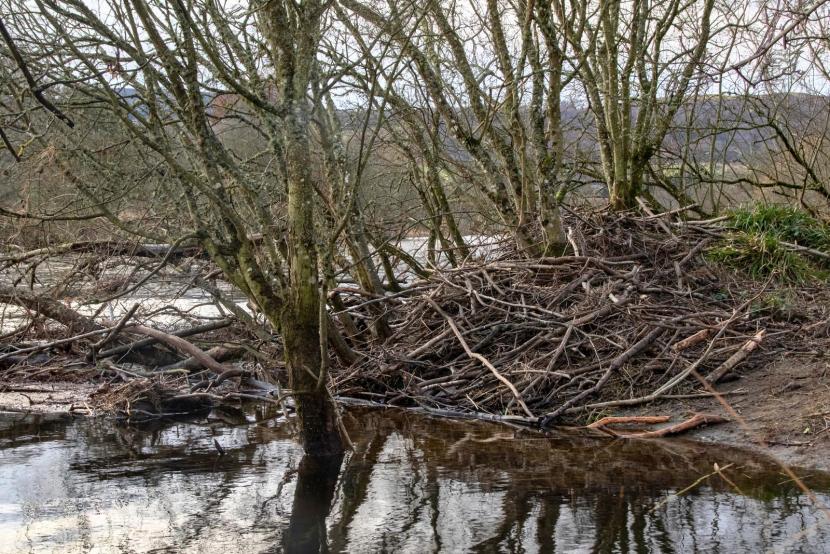
Most beavers have a mixture of burrows and bank lodges in their territory, with a bank lodge built around a chamber of burrows with a visible cap on top.
Burrowing by beavers can create weakness in flood banks, increasing erosion and resulting in more dynamic river systems but it can be a health and safety risk as burrows can collapse damaging or flooding nearby property or machinery.
Any land manager experiencing an issue from beaver burrowing should seek professional advice from NatureScot, as work needs to be carried out without causing pollution and consideration needs to be given to animal welfare.
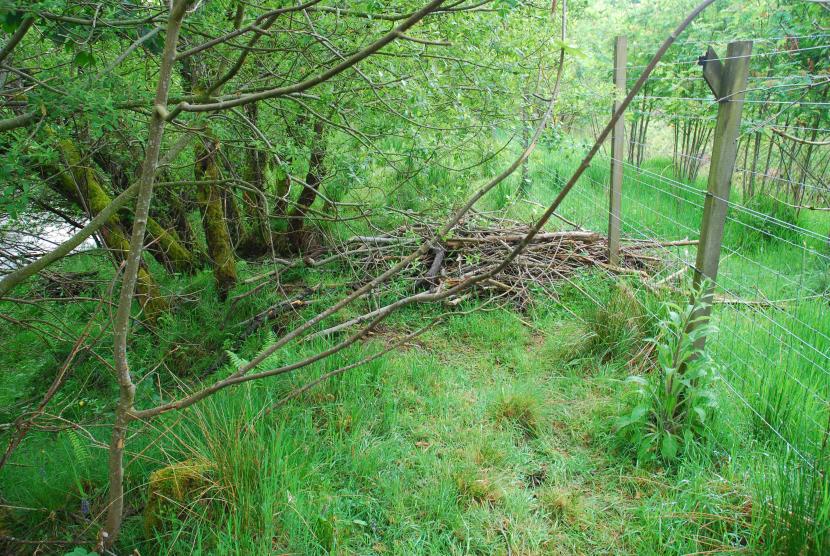
Questions and Answers
Do beavers carry disease?
Like all native mammals, beavers can carry a range of pathogens and host-specific parasites. Long-term health monitoring of Scottish beavers has revealed they do not appear to be significant reservoirs of diseases and the risk of introducing significant disease to humans, domestic animals or wildlife from captive bred or wild beavers in Britain was low. Beavers undergo disease screening and health checks as part of the translocation process.
What will control the beaver population with the absence of predators in Scotland?
People often believe beavers have no predators in Britain due the absence of the European Wolf, European Lynx and brown bear but young beavers, particularly kits, can still be predated on by red fox, domestic dogs, pine marten, birds of prey and large pike. There is also anecdotal evidence to suggest otters, American mink and badgers may be opportunistic predators of kits.
In Scotland territorial fights, infections from fight wounds and road traffic accidents are likely to the biggest cause of mortality to wild beavers. With the availability of suitable habitat defining and controlling the size of the population.
Do beavers help us tackle climate change?
Current research creates a complex picture with estimates ranging from beaver wetlands being viewed as carbon sinks to carbon sources.
By transforming dry areas into wetland through damming, beavers increase the amount of carbon that can be stored, but the area’s rewetting also results in methane being released into the atmosphere. Unmaintained beaver wetlands which return back into a dry state will release the carbon that was previously stored while it was a wetland.
Beavers can help us build landscapes that are more resilient to the impacts of climate change though, as their wetlands can reduce the risk of drought and flooding downstream as well as potentially helping us limit the spread of wildfire.
Do beavers eat non-native plant species?
Beavers consume a wide range of plants available in their territories including non-native plant species such as Elodea, Japanese knotweed and Himalayan balsam. Although their feeding may promote the establishment of non-native species (through disturbance, cutting and spreading of fragments) whether this significantly increases the distribution of such species remains to be proven.
Do beavers prevent fish passage?
The impact beaver dams have on migrating fish is complex with impacts site specific, species specific and changing over time. In low flows dams can form temporal barriers to fish movement, and in man-made canalised channels fish passage can be limited. During high periods of flow beaver dams can be passable and in naturalised areas where the river is given sufficient buffer from intensive land use, it can potentially cut around a dam creating side channels migrating fish can take to.
Recent research in Scotland found that Brown trout benefited from the increased availability of suitable habitat and food source created by beaver damming activity.
Where do I find out more information about beaver and their effects?
- Beavers in Scotland Report
- Centre of Expertise for Waters. Establishing the potential influence of beaver activity on the functioning of rivers and streams and water resource management in Scotland.
- NatureScot Research Report 1274: Survey of Tayside area beaver population 2020-2021
- The Eurasian Beaver Handbook
- A 2022 book titled Beavers: Ecology, Behaviour, Conservation, and Management




